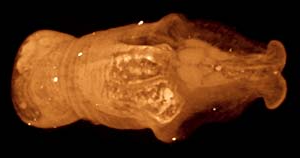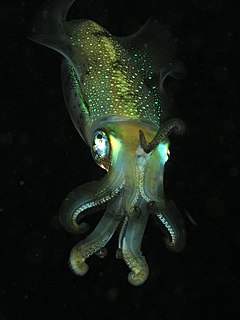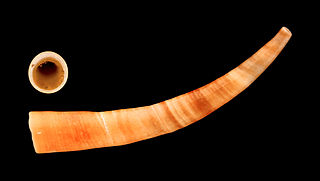 W
WAplacophora is a monophyletic group of small, deep-water, exclusively benthic, marine molluscs found in all oceans of the world. All known modern forms are shell-less: only some extinct primitive forms possessed valves. The group comprises the two clades Solenogastres (Neomeniomorpha) and Caudofoveata (Chaetodermomorpha), which between them contain 28 families and about 320 species. The aplacophorans are traditionally considered ancestral to the other mollusc classes. However, the relationship between the two aplacophoran groups and to the other molluscan classes and to each other is as yet unclear.
 W
WBivalvia, in previous centuries referred to as the Lamellibranchiata and Pelecypoda, is a class of marine and freshwater molluscs that have laterally compressed bodies enclosed by a shell consisting of two hinged parts. Bivalves as a group have no head and they lack some usual molluscan organs like the radula and the odontophore. They include the clams, oysters, cockles, mussels, scallops, and numerous other families that live in saltwater, as well as a number of families that live in freshwater. The majority are filter feeders. The gills have evolved into ctenidia, specialised organs for feeding and breathing. Most bivalves bury themselves in sediment where they are relatively safe from predation. Others lie on the sea floor or attach themselves to rocks or other hard surfaces. Some bivalves, such as the scallops and file shells, can swim. The shipworms bore into wood, clay, or stone and live inside these substances.
 W
WCaudofoveata is a small class within the phylum Mollusca, also known as Chaetodermomorpha. The class is often combined with Solenogastres and termed Aplacophora, but some studies have cast doubt on the monophyly of this group.
 W
WA cephalopod is any member of the molluscan class Cephalopoda such as a squid, octopus, cuttlefish, or nautilus. These exclusively marine animals are characterized by bilateral body symmetry, a prominent head, and a set of arms or tentacles modified from the primitive molluscan foot. Fishermen sometimes call cephalopods "inkfish," referring to their common ability to squirt ink. The study of cephalopods is a branch of malacology known as teuthology.
 W
WThe gastropods, commonly known as snails and slugs, belong to a large taxonomic class of invertebrates within the phylum Mollusca called Gastropoda.
Helcionelloida is an extinct group of ancient molluscs. These are the oldest known conchiferan molluscs, that is, they had a mineralised shell. Some members of this class were mistaken for Monoplacophorans. The class was erected by Peel in 1991.
 W
WChitons are marine molluscs of varying size in the class Polyplacophora, formerly known as Amphineura. About 940 extant and 430 fossil species are recognized.
 W
WThe Rostroconchia is a class of extinct molluscs dating from the early Cambrian to the Late Permian. They were initially thought to be bivalves, but were later given their own class. They have a single shell in their larval stage, and the adult typically has a single, pseudo-bivalved shell enclosing the mantle and muscular foot. The anterior part of the shell probably pointed downward and had a gap from which the foot could probably emerge. Rostroconchs probably lived a sedentary semi-infaunal lifestyle. There were probably more than 1,000 species of members of this class.
 W
WThe tusk shells or tooth shells, technically the Scaphopoda, are members of a class of shelled marine mollusc with worldwide distribution, and are the only class of exclusively infaunal marine molluscs. Shells of species within this class range from about 0.5 to 15 cm in length. Members of the order Dentaliida tend to be significantly larger than those of the order Gadilida.
 W
WTentaculita is an extinct class of uncertain placement ranging from the Early Ordovician to the Middle Jurassic. They were suspension feeders with a near worldwide distribution. For a more thorough discussion, see Tentaculites.
 W
WTryblidiida is a taxon of monoplacophoran molluscans containing the only extant representatives: 37 species are still alive today, inhabiting the ocean at depths of between 175 and 6,400 metres.